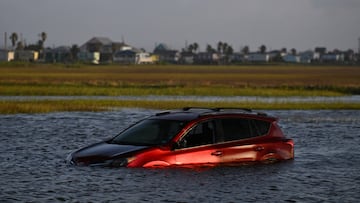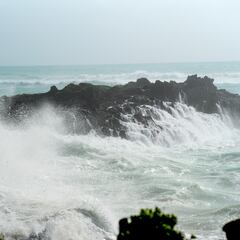What is a storm surge? The natural phenomenon left by tropical storm Alberto
During Alberto, storm surge flooding was seen along the Texas coast with water levels rising 2-4 feet above normal in some areas.


Tropical Storm Alberto, the first named storm of the 2024 Atlantic hurricane season, brought itself to Texas and Mexico with a bang. The storm had maximum sustained winds of 40 mph, bringing with it a signifcany storm surge.
This natural occurrence is characterised by an abnormal rise in sea level that accompanies a storm as it moves toward land. Combined with high tides, the surge led to the inundation of beaches and coastal communities, including Surfside Beach.
How storm surges are formed
Storm surges are the combination of strong winds and low atmospheric pressure associated with intense storms. As a cyclone approaches land, its powerful winds push water towards the shore, causing it to accumulate and rise above normal tide levels. The low pressure at the storm’s center also contributes by allowing the water to bulge upward, further increasing the surge height.
Several factors influence the severity of a storm surge:
- Wind speed and direction
- Storm size and intensity
- Forward speed of the storm
- Coastal topography and bathymetry
- Timing of astronomical tides
Storm surges can reach heights of up to 10 meters (33 feet) in extreme cases, especially when coinciding with high tide. The impact of these surges extends beyond immediate coastal areas, potentially affecting regions hundreds of miles from the storm’s center.
The consequences of storm surges are devastating. They can cause rapid flooding, damage to infrastructure, and create hazardous conditions for residents.
Storm surge and Alberto
The impact of storm surge extends beyond the immediate coastline. In Alberto’s case, its effects reached as far as 700 miles north of the storm’s center, affecting areas in Louisiana.
Tropical Storm Alberto, the first named storm of the 2024 Atlantic hurricane season, has hit Mexico and the US state of Texas, leaving destruction in its wake. pic.twitter.com/wuaeSXpeVM
— DW News (@dwnews) June 21, 2024
Related stories
While the storm itself was not as intense as some hurricanes, its large size contributed to a significant surge effect across Texas.
.

